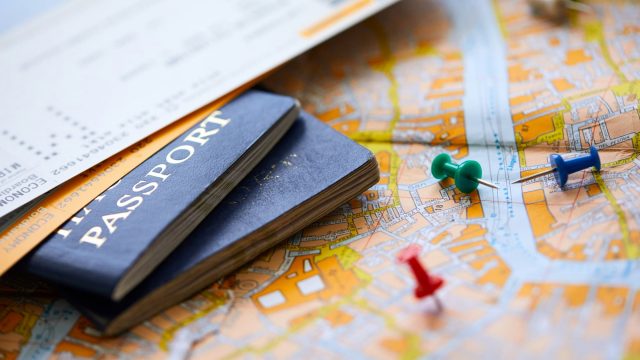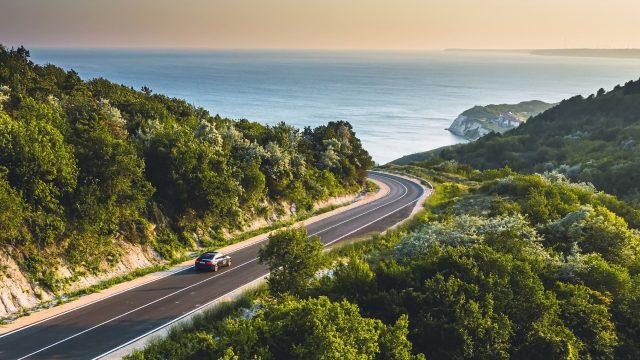An Eastern European gem steeped in history, Poland is starting to become a popular tourist destination. Visitors are discovering a friendly and welcoming country of considerable natural beauty. Enjoy idyllic lakes, beaches and stunning mountains which complement the wonderful architecture in the cities.
But Poland is pretty big. 312,679 km² to be precise – compared to the UK’s 242,900km². That makes it tricky to see as much as you’d like if you’re only visiting for a week. You could spend 7 days exploring Warsaw and the rest of Lower Silesia and you still wouldn’t have touched the surface.
To make up for this, we’ve put together some Polish road trip suggestions. They’ll give you the opportunity to see some of the key sites.
Southern Poland Road Trip – Kraków & Auschwitz
Kraków
Dating from the 7th century, the former royal capital of Kraków is a beautiful city filled with wonderful architecture and friendly people. Some of the architectural highlights include the wonderfully ornate and over the top St Mary’s Basilica in the main Market Square and the Gothic Wawel Castle.
Be sure to explore the Old Town and wander through the back streets whilst soaking up the atmosphere. If you’re continuing to Auschwitz, pay a visit to Schindler’s Factory first. The museum covers the Nazi occupation of Kraków in the former enamel works of Oskar Schindler.
Auschwitz-Birkenau
Perhaps the most famous “attraction” in Poland is the infamous Auschwitz-Birkenau State Museum. Since 1979, over 25 million people have visited the former concentration camp to pay their respects to the 1.1 million who were murdered. It also allows visitors to learn more about the atrocities that occurred between May 1940 and January 1945.
Visitors are expected to dress appropriately. Admission is free unless you require a guide. Groups are required to be guided. Visit www.visit.auschwitz.org for full details.
Wisla
When you leave Auschwitz, head on to the beautiful area surrounding Wisla in the Silesian Beskids mountain range. Take the chair lift to the top of the Adam Malysz Ski Jump for stunning views of the Beskidy Mountains. If it’s museums you’re after, Wisla has some excellent ones to choose from including the Museum of Skiing.
There are some great walking and hiking trails around here so make sure you come prepared! Alternatively, head down to Lake Czerniańskie for a quiet stroll or cycle.
Rabka
Located in the Lesser Poland Voivodeship, Rabka is a former spa town on the northern slopes of the Gorce Mountains. The town was used by the Nazi’s to train executioners and torturers. Modern Rabka has moved on and is now a wonderful little place to visit. Summer brings a number of folk festivals. There are also some interesting museums to be found here, and some wonderful walks should you wish to stretch your legs
Wieliczka Salt Mine
One of the largest tourist attractions in the country, the Wieliczka Salt Mine is visited by over 1 million tourists each year. Built in the 13th century, it produced salt up until 2007. It was then turned into a permanent museum, although commercial mining ceased in 1996 due to floods and low prices. The main attractions are the incredible statues and chapels carved out of the rock salt over the years.
The mine is 327m (1,073ft) deep, over 287km (178m) long and even has an underground lake! When you’ve finished exploring this vast labyrinth, it’s time to head back to Kraków.
Western Poland Road Trip – Warsaw & the Lake District
Warsaw
The capital of Poland, Warsaw is known for its culture. Rebuilt since it was flattened during WWII, the city has some brilliant museums including the Warsaw Rising Museum and the POLIN Museum of the History of Polish Jews. If it’s architecture you’ve come to see, both the Wilanów Palace and the Baroque Łazienki Palace are the perfect starting point.
The beautiful Old Town (Stare Miasto) is worth a visit and gives you an opportunity to stroll along the banks of the Vistula River.
Masurian Lake District
The Masurian Lake District is home to over 2,000 lakes and easily accessible from either Warsaw or Gdańsk. The Lakes are connected to each other via rivers and canals but also to the Black Sea via the Masurian Canals built in the 18th century. The Lakes are perfect for boating, canoeing, fishing, hiking and cycling around, and for bird watching. The largest lake in Poland, Śniardwy, can be found here as can Lake Łuknajno which is one of 11 nature reserves.
The resort of Giżycko is home to a popular fortress and some wonderful churches if you’d rather take in something more solid.
Białowieża National Park
Head out past Bialystok towards the Belarusian border and you’ll come across Białowieża National Park. Here you’ll find the home of the European Bison (Bialystok is home to Żubrówka if you want to stop off for a tasting). The Park is Poland’s oldest national park and forms part of the Białowieża Forest.
Once a royal hunting ground, Białowieża is divided into 3. The first section known as Orłówka is strictly protected area. Access is heavily restricted and requires a guide. The second, slightly less restricted zone is Hwoźna. This doesn’t require a guide and has numerous hiking and cycling trails. The third zone, Ośrodek Hodowli Żubrów, is reserved for the bison.
For a full introduction to this unique area, visit the Museum of Nature and Forest of the Białowieża National Park in the village of Białowieża.
Northern Poland Road Trip – Gdańsk
Gdańsk
Heavily re-built after the war, Gdańsk is located on the Baltic coast. It is considered to be one of the most beautiful cities in Europe. There are a number of excellent museums and art galleries to visit including the Gdańsk History Museum, the National Museum and the Central Maritime Museum. If it’s the water you’re interested in, stop off for a beer at one of the dockside beer gardens before taking a river cruise.
Similar to Kraków, Gdańsk is also home to a St Mary’s Basilica. The Basilica of the Assumption of the Blessed Virgin Mary is said to be the largest brick building in the world and was built between the 14th and 16th centuries. Another popular site is the Crane. Built in the early 15th century it became the symbol of Gdańsk. Once the largest port crane in Europe, it could lift 4 tonnes 36ft off the ground.
Malbork Castle
The largest castle in the world by surface area (143,591m²), Malbork served as one of the residences of the royal family for a time. Built by the Teutonic Order in the 15th century, it became a place of pilgrimage for the Hitler Youth in the 1930’s.
Kashubian Landscape Park
Kashubian Landscape Park (Kaszubski Park Krajobrazowy) is a protected area of 332km² west of Gdańsk. There are cycle paths, canoe routes, and hiking trails as well as ski lifts. The park is an important conservation area and there’s a wide variety of flora and fauna to be found here.
Słowiński National Park
Found on the north Poland coast, Słowiński National Park is famous for its vast sand dunes. There are a miles and miles of hiking trails to walk through as you explore this beautiful stretch of coastline. Forests, lakes, and rivers are found in abundance and the site is an important habitat for birds and animals including flamingos, the Steller’s eider, the Pallid harrier, and Eagle owls.
Packed your bags?
If this has got you in the mood for a road trip around Poland, why not have a look at some of the best tools for planning a road trip?
Alternatively, check out some of our other Eastern European blogs. Remember, if you want to be kept up to date with all the latest deals and news, sign up to our newsletter and follow us on Facebook and Twitter.





